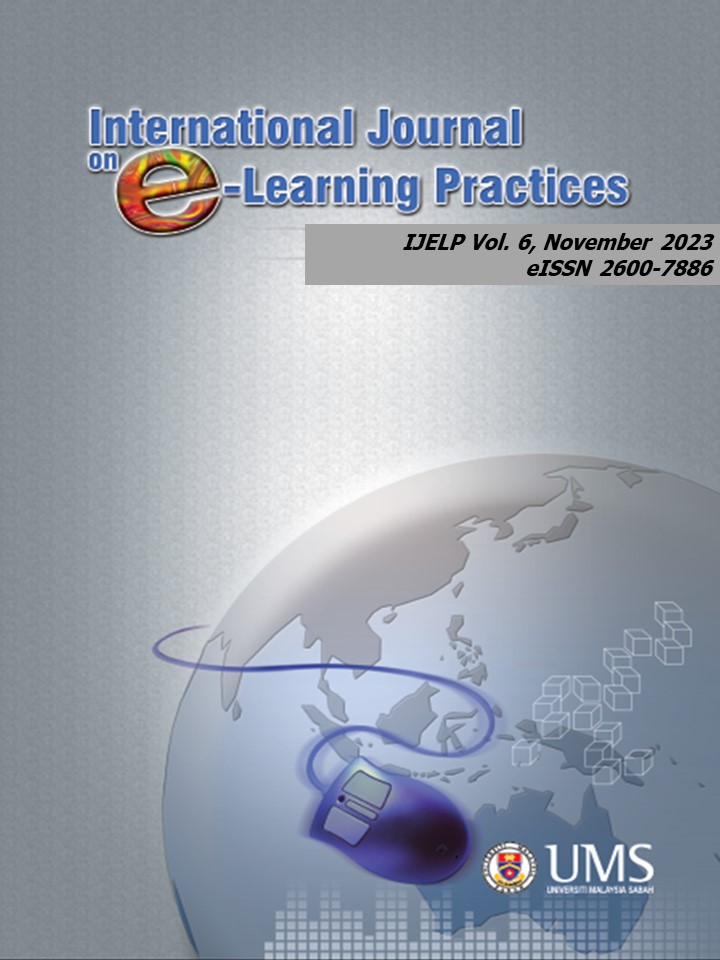Using TED Talks Videos to Improve Speaking Skills Among Secondary Students in Kota Kinabalu, Sabah
DOI:
https://doi.org/10.51200/ijelp.v6i1.4554Keywords:
TED Talks videos, quasi-experimental design, positive learning attitudes, evolving educational needsAbstract
This study investigates the incorporation of TED Talks videos as a pedagogical tool in secondary language instruction, with a specific emphasis on improving speaking fluency and students' attitudes toward learning. By recognizing the increasing importance of multimedia in language acquisition, the research aims to uncover the tangible benefits of integrating TED Talks videos into language lessons. Utilizing a quasi-experimental design with control and experimental groups, the study combined quantitative analysis of pre-tests and post-tests with qualitative insights gathered from a Likert questionnaire. The outcomes strongly indicated that students exposed to TED Talks videos exhibit significant advancements in their as indicated by the significant mean value of post-test scores between the experimental and control groups. Additionally, the research highlights the pivotal role of authentic materials in enhancing motivation and fostering positive learning attitudes. This research also delved into the wider implications of these findings for language instruction, underscoring the potential of multimedia resources to revolutionize conventional teaching methodologies. Beyond the classroom, the research envisions an education landscape where innovative techniques, such as the incorporation of TED Talks videos, reshape language teaching. By addressing pedagogical and motivational facets, the study advocates for contemporary resources to create engaging and effective learning experiences. The research encourages educators to explore how multimedia interacts with diverse learners and cultural contexts, ultimately promoting dynamic instructional approaches aligned with evolving educational needs.
References
Ahmad, M. K. (2019). Education 4.0 technologies for English language teaching and learning in the Malaysian context. Proceedings of the International Invention, Innovative & Creative (InIIC) Conference (pp. 6- 16). Kuala Lumpur: MNNF Publisher.
Ahmad, M. K. (2019). Using new technologies to teach English in Malaysia-issues and challenges. In Proceedings of the International Invention, Innovative & Creative (InIIC) Conference, Series. International Invention, Innovative & Creative (InIIC) (pp. 203-207). UM Kuala Lumpur & UiTM Cawangan Perak: MNNF Publisher.
Al-Ta’ani, M. H. (2018). Integrative and instrumental motivations for learning English as a university requirement among undergraduate students at Al-Jazeera University/Dubai. International Journal of Learning and Development, 8(4),89- 105.
Choirunnisa, M. R. (2021). TED Talks use in speaking class for undergraduate students. Jambura Journal of English Teaching and Literature, 2(1), 35-40.
Creswell, J. W. (2021). Educational research: Planning, conducting and evaluating quantitative and qualitative research. Harlow, Essex: Pearson Education Limited.
Defrioka, A. (2017). The use of information gap activities in teaching speaking (Classroom action research at smk). Lingua Didaktika: Jurnal Bahasa dan Pembelajaran Bahasa, 10(2), 116- 126.
Endahati, N. (2016). Analysis of the effectiveness of public speaking subject module information technology (IT) based. Ahmad Dahlan Journal of English Studies, 3(1, 17-27.
Etikan, I. M. (2016). Comparison of convenience sampling and purposive sampling. Americanjournal of theoretical and applied statistics, 5(1), 1-4.
Farrell, T. S. (2013). Reflecting on ESL teacher beliefs and classroom practices: A case study. . RELC Journal. 44(163).
Fitria, T. N. (2022). Using TED Talks in english language teaching (ELT): Supplemental resources for english language teaching (ELT). SOSMANIORA: JurnalIlmu Sosial dan Humaniora, 1(1), 36-43.
Fraser, M. W. (2010). Steps in intervention research: Designing and developing social programs. Research on social work practice, 20(5), 459-466.
Giannakos, M. N. (2013). Exploring the video-based learning research: A review of the literature. British Journal of Educational Technology Vol 44 No 6, 191– 195.
Gilakjani, A. P., & Ahmadi, M. R. (2011). Why is pronunciation so difficult to learn? English language teaching, 4(3), 74-83.
Hariyanto. (2016). THE ASSESSMENT PROCEDURES OF SPEAKING FLUENCY USING RETELLING TECHNIQUE. Jurnal Edulingua Vol 3. No. 2 July-December, 7-14.
lharahsheh, H. H., & Pius, A. (2020). A review of key paradigms: Positivism VS interpretivism. Global Academic Journal of Humanities and Social Sciences, 2(3), 39-43.
Nursafira, M. S. (2020 ). TED Talks in EFL context: An alternative way for teaching and improving students’ speaking skills. ELSYA: Journal of English Language Studies Vol. 2, No. 2, 43-47.
Jerome, C. &. (2015). Teachers’ beliefs and classroom practices in Malaysian ESL secondary school classroom. In International Conference on Language Studies. Kuching, Sarawak.
Kashinathan, A. A. (2021). ESL learners’ challenges in speaking English in Malaysian classroom. International Journal of Academic Research in Progressive Education and Development, 10(2), 983–991.
Karnine, S. M. B. B. V. K. S. V., Preece, A. S. D., Ahmad, I. B. S., & Muhammad, S. S. B. (2022). A Study on Difficulties Encountered and Perception by English as Second Language (ESL) Learners in Malaysian University Examination Test (MUET). International Academic Symposium of Social Science 2022.
Kusumastuty, P. E. (2019). Student’s perceptions of using TED Talks to improve EFLspeaking skill. UICELL Conference Proceeding, (pp. 1- 14). Jakarta.
Rich, T. T. (2011). Using video to analyze one’s own teaching. British Journal of Educational Technology, 678–704.
Robson, C. A. (2016). Real world research: A resource for social research methods in applied settings. Fourth Edition) Wiley-Blackwell.
Ross, J. A. (2006). The reliability, validity, and utility of self-assessment. Practical Assessment, Research, and Evaluation, 11(1), 10.
Sailun, B. (2018). The Effect of TED Talks Video Towards Students’ Speaking Ability at English Study Program of FKIP UIR. . Perspektif Pendidikan dan Keguruan, 9(1), 65- 7, 65-74.
Savignon, S. J. (2017). Communicative Competence. The TESOL Encyclopedia of English Language Teaching, 1–7.






